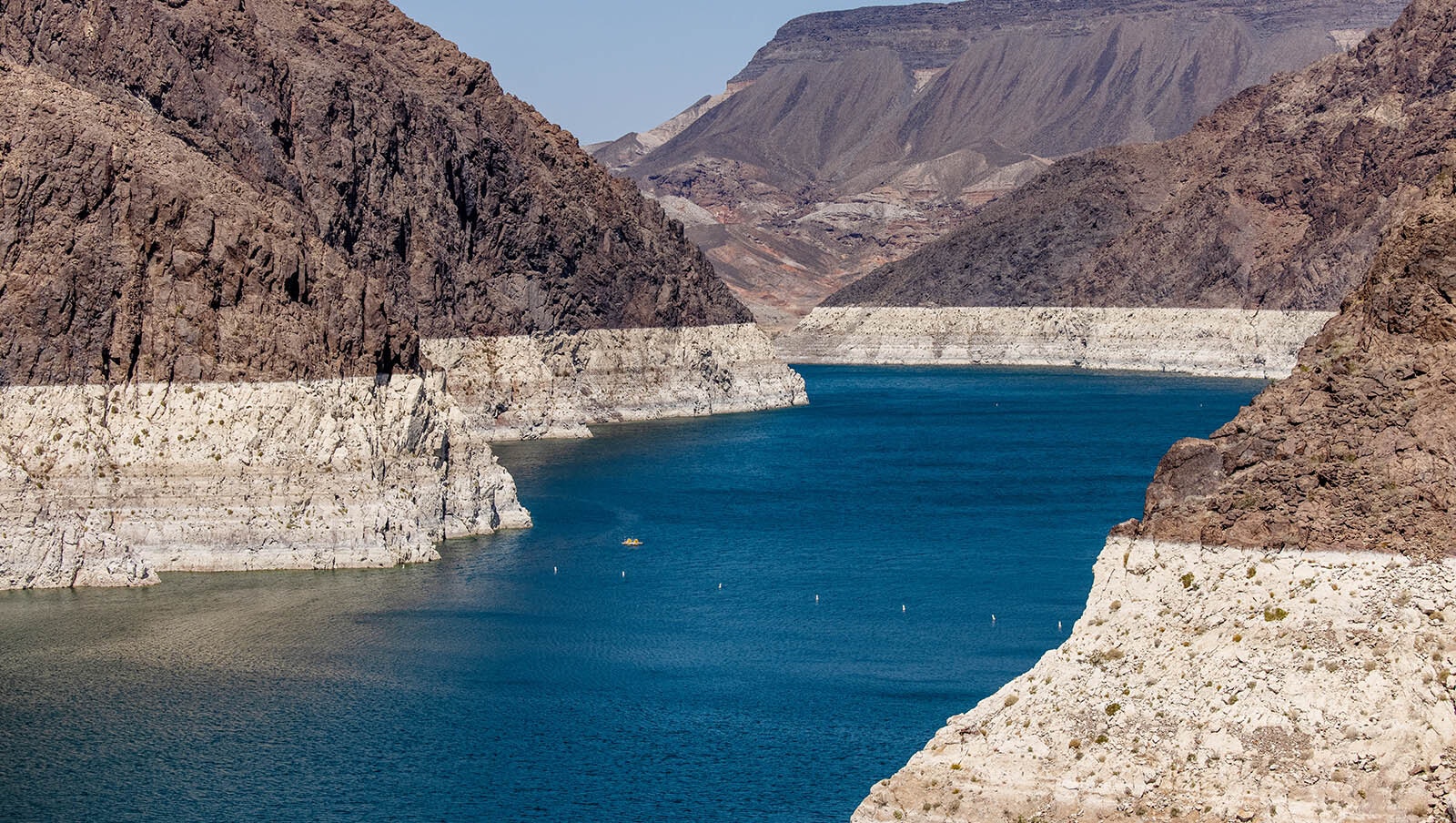The vested parties along the Colorado River drainage, including Wyoming, are starting to grasp just how dire the water shortage is, an expert in the legal compact governing the river’s management said.
However, any major policy changes are probably still a long way off, University of Wyoming law professor Jason Robison told Cowboy state daily.
Right now, the various entities involved – which include six states, the federal government, Mexico and 30 tribal sovereignties – are in a state of “triage” regarding the river’s condition, Robison said.
“Everyone recognizes that the patient is bleeding out on the table,” he said.
Robison is an expert on the 1922 Colorado River Compact, to which Wyoming and the other vested parties are bound. He recently edited a book on the subject, published in time for the compact’s 100th anniversary.
This month, he attended a meeting of the Colorado River Water Users Association (CRWUA) in Las Vegas.
“It was a sobering event, which is a little funny given the location in Vegas,” he said.
‘Imbalance Of Supply And Demand’
The overarching situation is simple enough. After 22 years of persistent drought conditions across the West and Southwest, through which the Colorado River flows, the river is drying up.
Juggling the various responsibilities and demands of all the jurisdictions along the drainage is where things get complicated, Robison said.
The river’s condition has led some to speculate over a “doomsday scenario” if things don’t improve.
There’s a growing “imbalance of supply and demand” for all those who have water rights along the river and its tributaries, which include Wyoming’s Green River, Robison said.
Straining Upper And Lower Basin States
Under the Colorado River Compact, the “Upper Basin” states – Wyoming, Colorado and Utah – have obligations to help meet the flow demands of the “Lower Basin” entities, which include Arizona, Nevada, New Mexico and Mexico.
Toward that end, 500,000 acre-feet of water were released from Flaming Gorge Reservoir earlier this year. An acre foot of water is the amount that would submerge an acre of land 1 foot deep.
While it’s not yet known when there might be more such releases from Flaming Gorge, worry continues to fester over the condition of the two large downstream reservoirs, Lake Powell and Lake Mead, Robison said.
Worst-Case Scenario
The worst-case scenario, which the vested parties are scrambling to avoid – would be Lake Powell reaching “dead pool,” he said.
That would mean the water level at Lake Powell gets so low it couldn’t feed the spillways that send water downstream to Lake Mead. The latter supplies hydroelectric power to Las Vegas and other Southwestern towns and cities.
Flaming Gorge and the other upstream reservoirs are “going to be operated with an eye toward their ability to supply Lake Powell,” Robison said.
That could put a pinch on some Wyoming water users, particularly farmers along the Green River who use the river to irrigate their crops.
Good To See The Tribes Involved
The “short game” will involve a supplemental environmental impact statement from the Bureau of Reclamation, which is the primary federal agency in charge of the dams, reservoirs and other infrastructure along the Colorado River, Robison said.
That might help determine an immediate emergency plan for keeping the reservoirs fed.
Past that, it was apparent from the CRWUA meeting that none of the entities are in the right “head space” to tackle any major long-term decisions or policy changes, Robison said.
Once bright spot during the meeting was the presence and participation of tribal sovereignties, Robison said.
“The tribes showed up,” he said. “Space was made for the tribal sovereigns. That needs to be the case going forward, in my view. Inclusivity is important, tribal water rights are important.”
No long-term plan for managing the Colorado River will work without the tribes, so having them onboard is a big step in the right direction, Robison said.
“Historically, it’s been dominated by the states and the federal government,” he said. “And the federal government, although it is a trustee to the tribes, hasn’t done enough to engage them.”





